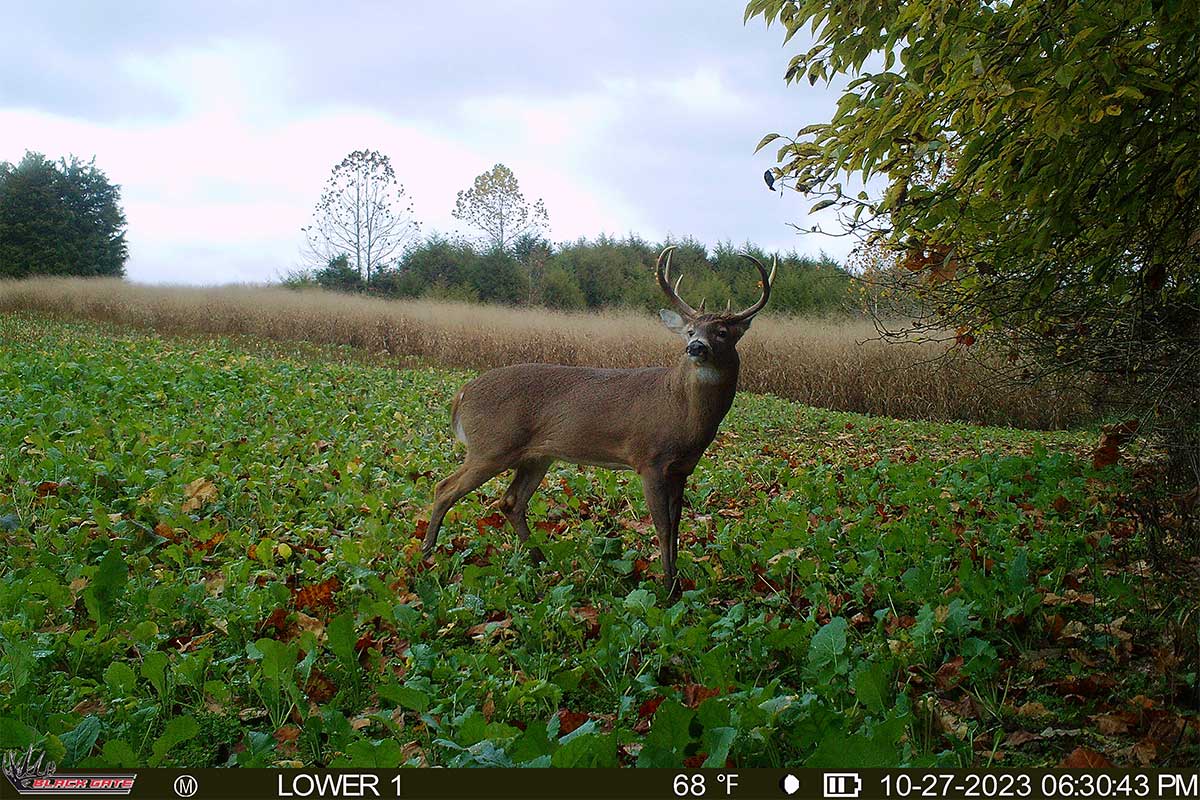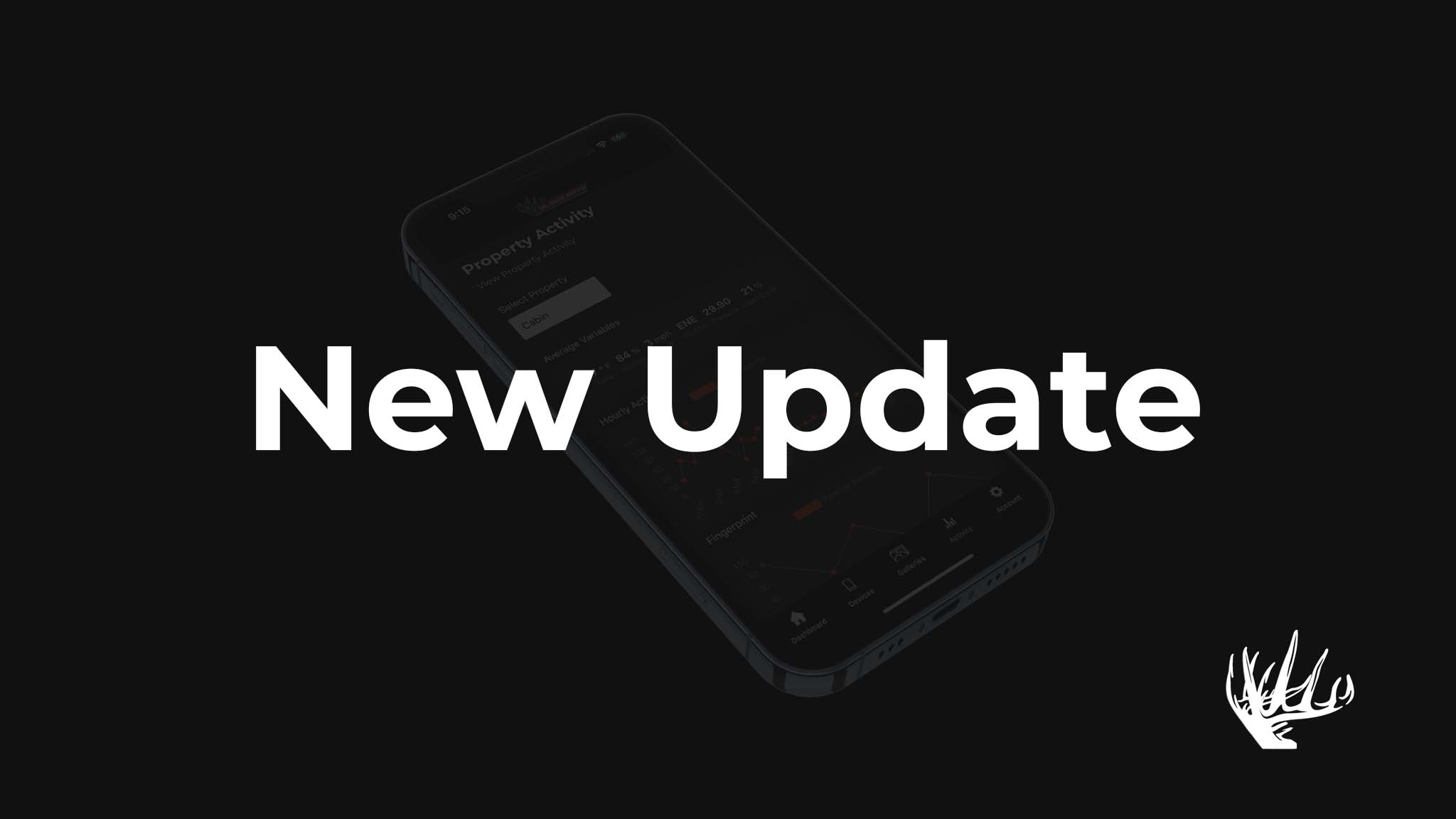As deer season settles into October, one of the smartest things you can do as a hunter is to understand what your local deer are eating—and when. While bucks are ramping up for the rut, their stomachs still lead much of their movement in the early and mid-month phase. If you're not dialed into the right fall food sources, you’re probably missing deer that could be daylighting just out of reach.
In this blog, we’ll break down the top October food sources for deer, explain why they matter, and show you how to use cellular trail cameras to locate, monitor, and pattern movement around these hotspots. Whether you hunt farmland, mixed timber, or public land, keying in on food-based travel routes is the pre-rut advantage you need.
Why October Food Patterns Matter
October is a transitional month. Deer shift from late-summer feeding routines to fall foraging behavior. Does focus on calorie-rich foods to prepare for winter, and bucks—though beginning to show interest in does—are still feeding consistently. They haven’t hit full-blown rut mode yet, so food continues to dictate much of their daylight movement.
By focusing your trail cameras on the right October feeding zones, you can:
- Identify new bucks entering your area
- Determine when deer are moving in daylight vs. at night
- Predict where bucks will stage before the rut begins
And most importantly: get in the stand before they vanish into nocturnal mode or lock into rut craziness.
Top October Food Sources to Monitor
Here are the most productive food sources to focus on during October—with tips for where and how to set up trail cameras for each.
🍂 White Oak Acorns (Hard Mast)
If you’ve got white oaks dropping, forget the fields—deer will be buried in the timber. White oak acorns are sweeter and lower in tannins than red oaks, making them the preferred early-fall feed.
Trail Cam Tip:
- Set up under the drip line of active trees.
- Use photo mode with short intervals.
- Monitor rubs/scrapes nearby—bucks love to stage here.
🌽 Standing Corn Fields
Corn is king—especially if it hasn’t been harvested yet. It offers both food and cover, making it a hotspot for mature bucks to feed during legal light.
Trail Cam Tip:
- Focus on entry/exit trails, especially where woods funnel into corners of the field.
- Cellular trail cams here shine—you get real-time updates without intrusion.
🌾 Cut Soybean or Alfalfa Fields
Soybeans lose their draw as they yellow and dry, but cut fields or regrowth edges can still pull does and young bucks. Alfalfa fields, especially in the South or Midwest, are green magnets in early October.
Trail Cam Tip:
- Use video mode or multi-shot photo bursts.
- Angle cameras across trails where deer stage or pause before entering the open.
🌰 Red Oak Acorns (Late Hard Mast)
Red oaks drop later and are more bitter, but they’ll keep deer coming back into late October and November, especially if white oaks dry up early.
Trail Cam Tip:
- Place cams on trails connecting bedding to red oak flats.
- Monitor midday activity as bucks begin to scent check the area.
🥬 Green Food Plots or Clover
If you’ve got access to a clover plot or fall forage blend (like radish, chicory, or turnips), don’t overlook it. October weather keeps these cool-season greens attractive.
Trail Cam Tip:
- Set cameras on the downwind edge, capturing scent-checking and staging.
- Pair with mock scrapes for bonus intel on bucks cruising in.
🍏 Fruit Drops (Persimmon, Apple, Crabapple)
Wild fruit trees are often overlooked, but when they drop, they can become deer magnets overnight—especially if isolated from other food sources.
Trail Cam Tip:
- Set a camera 5–10 yards back, angled to capture side-view movement.
- Keep your camera at waist height for best nighttime photo quality.
Best Trail Camera Practices for October Food Sources
To maximize your camera setup this month:
✅ Use Cellular Trail Cameras
Get real-time intel without leaving scent or disrupting movement. Black Gate’s wireless models make it easy to adjust tactics on the fly.
✅ Set to High Frequency
Bucks are more sporadic in October—capture every movement. Use a short photo delay and consider burst mode for fast-moving action.
✅ Check Weather Patterns
Cold fronts drive deer to feed more in daylight. Watch for pressure rises and temperature drops—then monitor your cam data for surges in activity.
✅ Avoid Over-Saturating an Area
Too many cams or frequent visits can pressure deer. Choose 2–3 strategic locations and let the data come to you.
Conclusion: Follow the Food, Find the Bucks
October isn’t just about pre-rut scrapes and random sits—it’s about dialing in food patterns, recognizing shifts in movement, and using the best trail camera setups to guide your strategy.
Whether it’s a hidden white oak ridge, the back corner of a cut cornfield, or a lonely fruit tree at the edge of a swamp—food sources unlock the deer movement puzzle.
So set those trail cams smart, let the weather work in your favor, and when the images roll in—be ready to strike. The more you understand where deer are eating, the better chance you have to be waiting where they walk.




Share:
Timing Is Everything: Best Times of Day to Capture Deer on Trail Cameras in October